
Gracillarioidea is a large superfamily containing four families of insects in the order Lepidoptera. These generally small moths are miners in plant tissue as caterpillars. There are about 113 described genera distributed worldwide, the most commonly encountered of which are leaf miners in the family Gracillariidae.

Gracillariidae is an important family of insects in the order Lepidoptera and the principal family of leaf miners that includes several economic, horticultural or recently invasive pest species such as the horse-chestnut leaf miner, Cameraria ohridella.

Phyllonorycter apparella, the aspen leaf blotch miner moth, is a moth of the family Gracillariidae. It is found in most of Europe. It is also present in Turkey and North America.
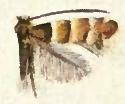
Chrysaster ostensackenella is a moth of the family Gracillariidae. It is known from Ontario, Québec and Nova Scotia in Canada, and the United States. It has also been recorded in 2015 from China and in 2017 from Korea, and in 2022 from Central Italy.
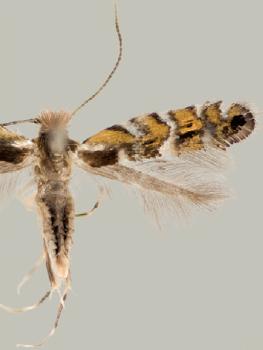
Macrosaccus morrisella is a moth of the family Gracillariidae. In North America it is known from Manitoba, Ontario, and Quebec, south and west to Texas and Colorado.

Phyllonorycter alnicolella is a moth of the family Gracillariidae. It is known California and Maine in the United States and Ontario and Quebec in Canada.
Cameraria affinis is a moth of the family Gracillariidae. It is known from Quebec, Canada, and the United States.
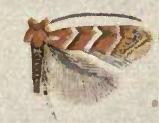
Cameraria caryaefoliella is a moth of the family Gracillariidae. It is known from Ontario and Quebec in Canada, and the United States.

Cameraria macrocarpella is a moth of the family Gracillariidae. It is known from Ontario and Quebec in Canada, and New Jersey, Texas, Maine, Maryland, New York, Illinois and Vermont in the United States.
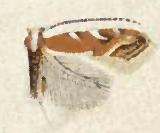
Cameraria quercivorella is a moth of the family Gracillariidae. It is known from Ontario, Quebec, and Nova Scotia in Canada and Kentucky, Florida, Georgia, Maine, Maryland, Michigan, New York, Texas, Vermont and Illinois in the United States.

Cameraria betulivora is a moth of the family Gracillariidae. It is known from Ontario and Quebec in Canada and the United States.

Cameraria bethunella is a moth of the family Gracillariidae. It is known from Ontario and Quebec in Canada, and Illinois, Kentucky, Connecticut, Maine, New York and Texas in the United States.
Cameraria lobatiella is a moth of the family Gracillariidae. It is known from British Columbia in Canada, and California in the United States.
Cameraria pentekes is a moth of the family Gracillariidae. It is known from British Columbia in Canada, and California and Washington in the United States.
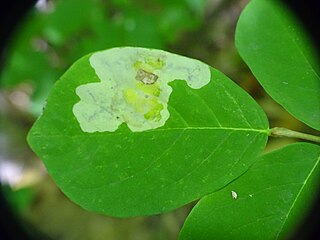
Leucanthiza dircella is a species of moth in the family Gracillariidae. It is known from Canada, and the United States.
Leucanthiza forbesi is a moth of the family Gracillariidae. It is known from Argentina.
Parornix preciosella is a moth of the family Gracillariidae. It is known from Québec, Canada, and Connecticut, Pennsylvania and Vermont in the United States.
Caloptilia fraxinella is a moth of the family Gracillariidae. It is known from Canada and the United States.

Gracillariinae are a subfamily of moths which was described by Henry Tibbats Stainton in 1854.



